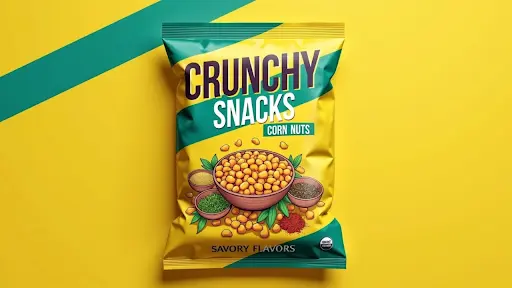Sylvester Graham became active in a temperance movement during the 1830s. He believed that pleasures like food, sex and alcohol caused irreparable harm to society; thus he advocated bland diets and abstinence from physical pleasures.
This simple graham cracker recipe can easily be made at home and features 8 grams of whole grains. Furthermore, this natural sweetener-based option uses no high fructose corn syrup and there are no artificial additives present.
Origins
Graham crackers have long been recognized as an excellent snack food and essential baking ingredient, serving as the basis of numerous dishes such as pies and gingerbread houses, becoming part of social and family traditions such as S’mores or Christmas treats, while their reputation for wholesomeness echoes a Victorian emphasis on propriety and self-control; furthermore they’ve long been linked with diets or reform movements, such as Sylvester Graham’s principles of healthy eating.
Graham crackers were first created during the early 19th century by Reverend Sylvester Graham (1794-1851), a Presbyterian minister known for promoting temperance and healthful living practices. Graham believed that excessive physical lust caused sinful behaviors to surface as well as serious illnesses like pulmonary consumption, spinal disease, epilepsy and insanity – issues with which he strongly advocated.
Graham suggested a diet rich in unbleached flour and vegetables as an antidote for his sexual desire, according to Atlas Obscura. In particular, he sought out flour milled from whole wheat berries rather than just its endosperm which resulted in coarser textures than standard all-purpose or whole wheat flour varieties.
Modern-day graham crackers are made using the same dough, though most often it is manufactured instead of hand-formed. Dough is placed on a conveyor belt where it passes between metal gauging rollers to gradually reduce thickness before being baked and cooled – adding flavor with sweeteners such as sugar, corn syrup, molasses and honey as needed to add sweetness and add texture.
Flavors
Graham crackers are commonly flavored with salt and cinnamon, with other ingredients sometimes added for texture, flavor and/or aroma such as whey, corn syrup, honey or molasses to increase texture, flavor and/or aroma. Leavening agents like baking soda or sodium acid pyrophosphate may also be added to help the dough rise for the light crisp texture that characterizes graham crackers.
Graham crackers use a special kind of whole wheat flour called “graham flour”, named for their creator Sylvester Graham. Graham was an advocate of veganism who believed that eating foods high in fat and sugar aroused sexuality and led to moral depravity such as masturbation; according to Atlas Obscura. Graham believed only through following a strictly vegetable-and-water diet could people avoid sexual immorality and savage crime.
Graham flour is coarser ground than all-purpose or other whole wheat flours, giving it its distinctive nubby texture and mouthfeel. Other key graham cracker ingredients include water, shortening (canola or vegetable), sugar, brown rice syrup, salt and leavening (baking soda or sodium acid pyrophosphate). All materials entering a bakery must first be tested to ensure their quality before being allowed through to be processed into finished products and sold to consumers.
Ingredients
Graham crackers’ main ingredient, whole wheat flour or “graham flour,” takes its name from inventor Sylvester Graham. A devout Presbyterian, Graham was part of the temperance movement which advocated abstinence from alcohol, sexual vice and other vices such as food pleasures such as rich foods which could cause sexual desire among both genders and lead to moral depravity such as extramarital affairs and masturbation. Graham believed that indulgent pleasures of food like rich meats or rich desserts aroused sexual desire in men and women which led to moral depravity such as extramarital affairs or masturbation among males or masturbation of males.
Graham crackers contain sugar, honey and salt. Graham flour provides their classic taste and texture; regular whole wheat flour will work just as well in their place if graham flour cannot be found.
Other ingredients found in graham crackers include cinnamon and leavening agents (like baking soda or sodium bicarbonate). These help give the dough its signature spongy texture, helping the crackers rise during baking to form air pockets that create lightness.
Butter gives crackers their rich, flakiness and moisture-retaining power, helping the crackers bake evenly while staying moist throughout their baking cycle. Manufacturers add whey or lecithin to make handling and rolling easier before rolling it out into sheets to be cut with cookie cutters to form squares or fun shapes; then packaged and sold at stores or shipped straight back out again for sale.
Variations
As graham crackers have grown increasingly popular, some manufacturers have sought to differentiate their brands through premium ingredients or unique shapes, as well as using leavening agents to help the dough rise slightly for an airy and crunchy texture.
Other ingredients are often added to improve flavor and texture, like cinnamon for its distinct graham cracker flavor, salt to balance sweetness, whey for mild flavor without adding much moisture, leavening agents such as sodium bicarbonate or sodium acid pyrophosphate that create air pockets to create their unique crunch and leavening agents that create air pockets – all are used to further elevate taste and texture in graham crackers.
Once the finished product has been assembled, it must then be packaged for distribution. Square graham crackers typically come packaged in individually wrapped bags or boxes while animal-shaped varieties often arrive wrapped in plastic wrappers or cardboard cartons to ensure maximum appeal during transit and prevent any potential damages to crackers during transportation. Packaging helps make these delectable snacks attractive as well as protecting them from damage during shipment.
Graham crackers are an enjoyable snack enjoyed by many for their tasty texture and pleasing flavor. Unfortunately, however, they contain high levels of carbohydrates and sugar; therefore those living with diabetes should limit their consumption of them and choose ones baked with less sugar, while pairing them with foods rich in fiber and protein to help prevent their blood sugar and insulin from rising too rapidly.


